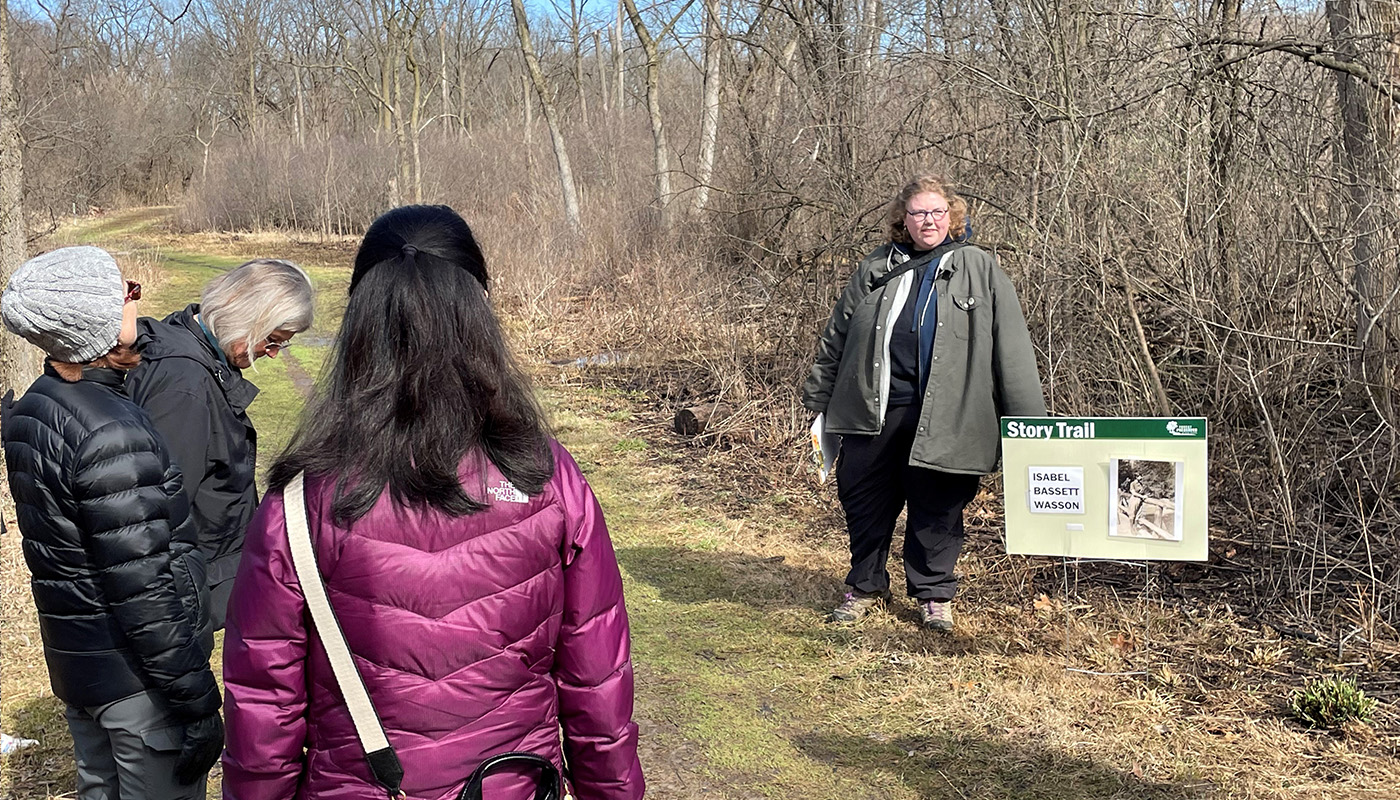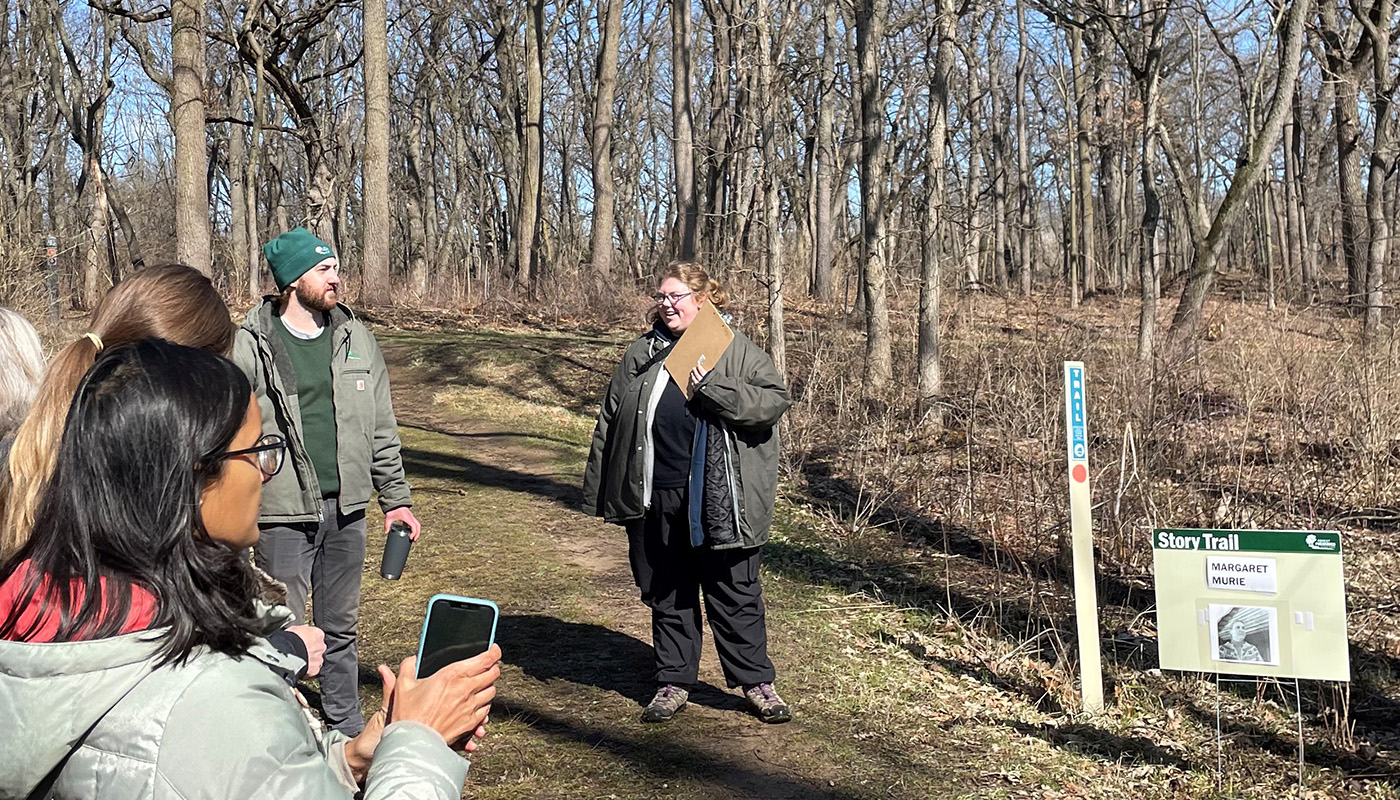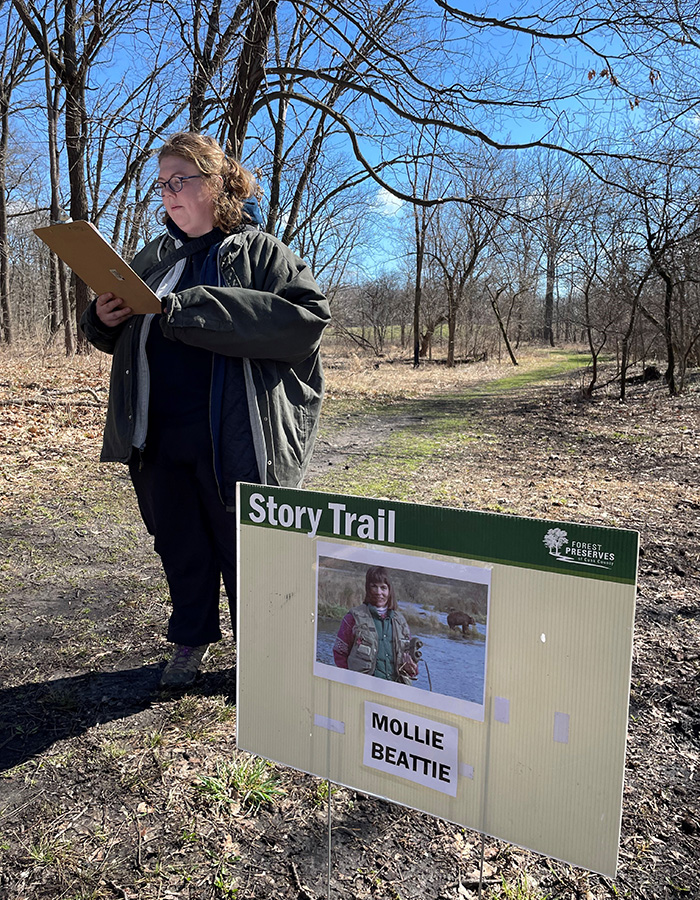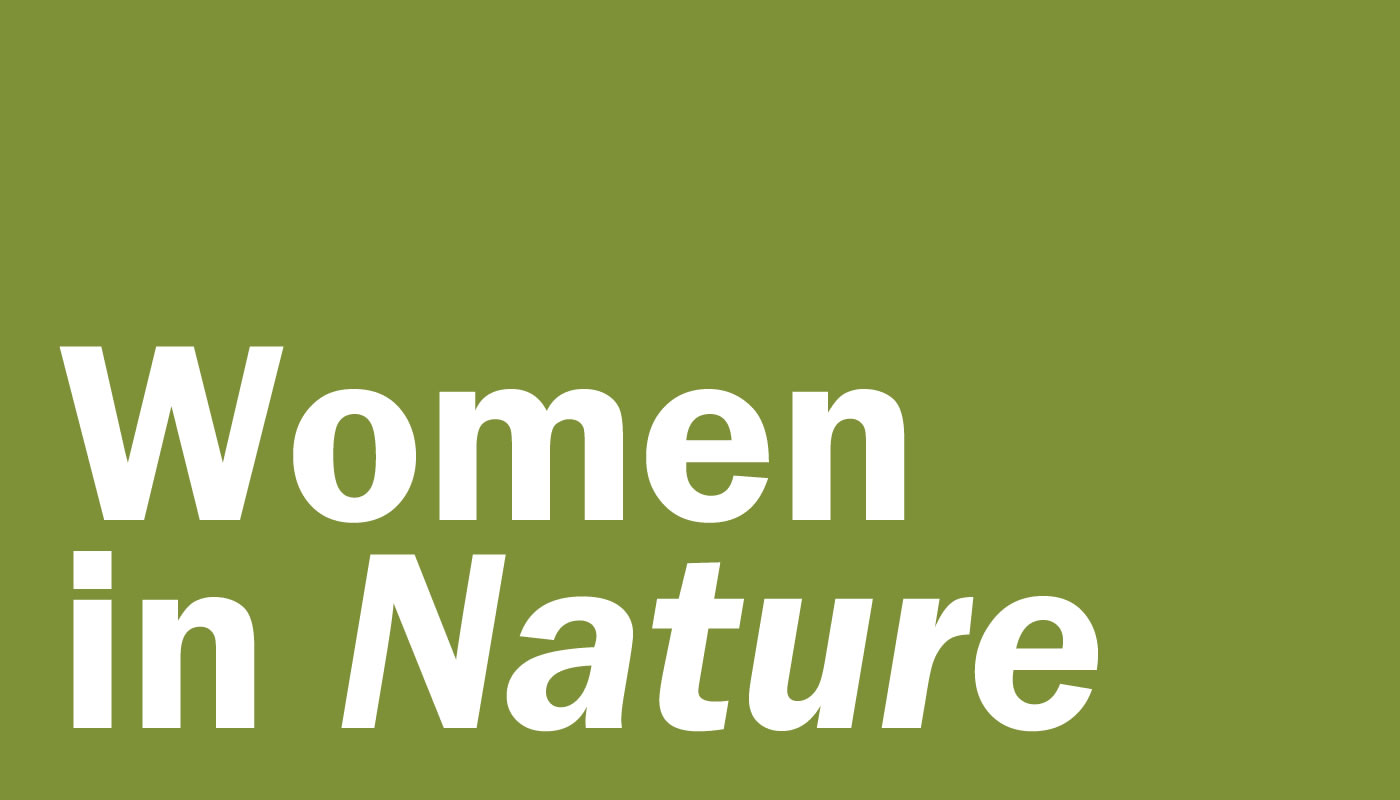About a dozen women interested in conservation strolled the damp grounds at Bemis Woods in Western Springs for about 45 minutes on a bright, crisp morning, stopping every so often to hear the stories of five pioneering female conservationists, as part of a Women’s History Month event held March 6 and led by Eleanor Carpenter, aide in the Forest Preserves’ Department of Conservation & Experiential Programming.
Rachel Carson
At the first stop, they learned about famed author Rachel Carson, who wrote the 1962 blockbuster “Silent Spring.” Her work led to a much greater awareness of the harmfulness of pesticides and, eventually, to the banning of DDT. Carson also helped to bring the environmental movement into the American mainstream, spurring the creation of the Environmental Protection Agency and the Clean Air and Clean Water Act.
“DDT, at this time, was being used to get rid of mosquitos and moths; but birds were also dying as a result of the aerial spraying,” Carpenter said. “Silent Spring” made already-known scientific information more accessible to members of the general public. “She left an outstanding legacy. The birds that were most threatened by DDT have made an incredible comeback, and we’re able to see the physical results of her work. … Here, we have birds all around us.”
Wangari Maathai
The second conservationist highlighted on the walk was Kenyan activist Wangari Maathai, founder of the Green Belt Movement that encouraged Kenyans to replant trees in exchange for modest remuneration. This replenishment initiative occurred “in response to the needs of rural Kenyan women who reported their streams were drying up, their food supply was less secure, and they needed to walk further for firewood,” Carpenter said.
In 2004, Maathai became both the first African woman and the first environmentalist to receive the Nobel Peace Prize for her efforts. “The work of Maathai and the Green Belt Movement continues to stand as proof of the power of grassroots organizing, and that when communities come together, they can make a difference,” Carpenter said.

Isabel Bassett Wasson
The strollers also learned about Isabel Bassett Wasson. One of the first interpretive rangers hired by the U.S. National Park Service—and the first female ranger at Yellowstone National Park—she separately had a career as one of the first female petroleum geologists. Wasson first worked for the Park Service in 1920 after a park superintendent overheard her giving impromptu lectures on geologic features at both Yellowstone and Glacier National Park.
“She took the job but also suggested that the national parks hire college geology and biology students as interns to lead tours during the tourist season, which is a policy that continues to this day,” Carpenter said. “Before her, there really wasn’t much interpretation being done at the National Park Service.” Wasson and her husband later moved to the Chicago area, where she taught classes in schools and museums, served as president of the Chicago Ornithological Society and became a well-respected amateur archaeologist, identifying a previously unrecognized effigy mound along the Des Plaines River in Thatcher Woods.

Margaret Murie
The next conservationist on the trail was Margaret Murie, known as the “grandmother of conservation,” whose activism helped lead to both the Wilderness Act of 1964 and the creation of the Arctic National Wildlife Refuge. A native Alaskan, Murie served as part-time director of The Wilderness Society before going with her husband on an expedition to gather information about Alaska’s wildlife to determine its merit for federal protection.
The Refuge “was established due to their careful study and persistence,” Carpenter said. The Wilderness Act “allowed Congress to designate wilderness areas and established the National Wilderness Preservation System. … [Murie] worked on the Alaska National Interest Lands Conservation Act, which was signed into law in 1980 and ensured the protection of more than 100 million acres of Alaska’s wilderness.” For her efforts, Murie received the Audubon Medal, the John Muir Award and the Presidential Medal of Freedom.

Mollie Beattie
Finally, the attendees learned about Mollie Beattie, the first female director of the U.S. Fish and Wildlife Service, who served during the Clinton Administration and oversaw both the creation of 15 new wildlife refuges and the reintroduction of the grey wolf into Yellowstone.
“She became nationally known as a strong voice for conservation and an advocate for thinking about land and wildlife management in ecosystem terms,” Carpenter said. “Her philosophy as a forester, conservationist, administrator and land manager was made clear in her repeated assistance that people must start making better connections between wildlife habitat health and human health, connections between their own actions and the fate of ecosystems on which both humans and wildlife depend, and connections between the well-being of the environment and the economy. … Her ideas were well received in conservationist circles.”
Beattie’s ideas and those of the other women conservationists were well received by attendees such as Burr Ridge resident Marta Bennett, a landscape designer, master gardener and master naturalist with a degree in horticulture. “The Forest Preserves are an incredible public resource,” she said. “The people that present are passionate and knowledgeable. So I think it’s time really well spent. To me, it’s entertaining, educational, stimulating. … And you get out in nature and walk the trails, which is very helpful.”
South Side Chicago resident Claudetta Griffith had three reasons for attending the event. “I am an avid lover of the outdoors, I am a woman, and I support the Forest Preserves and its efforts,” she said. “Every woman that was presented today was a bona fide trailblazer. … I took lots of pictures, and I can’t wait to learn more about them, and talk to my friends about them.”
South Sider Valerie Mays, whom Griffith invited out, had a similar reaction. “I thought that was very interesting,” she said. “It’s really nice to see what my female counterparts have done. I would like to do a little more research as well.”
Those who would like to learn about other women conservationists can participate in a similar event at 10 a.m. next Saturday, March 23, at the Little Red Schoolhouse Nature Center in Willow Springs. Registration is required.

